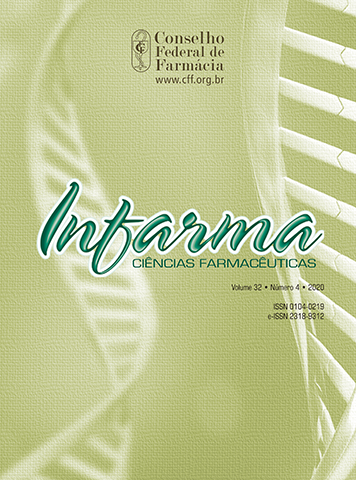COMPARATIVE ANALYSIS OF METHODS FOR HCV SCREENING IN HEMOTHERAPY SERVICES
DOI:
https://doi.org/10.14450/2318-9312.v32.e4.a2020.pp336-343Keywords:
Hepatitis C, blood safety, techniques for nucleic acid amplification, immunological testsAbstract
Among the viral hepatitis, hepatitis C (HCV) consists in a significant public health problem and requires the need for screening tests increasingly effective in detecting HCV, increasing the safety of donated blood. This research compared the effectiveness of HCV screening among the methodologies used by the blood center, also checking whether there was a reduction in the immunological window after the introduction of the nucleic acid test (NAT) methodology, conducted through retrospective analysis of serological record sheets of 12,443 potential blood donors screened from July 2014 to June 2015 for the HCV at the Regional Blood Center of Passo Fundo - Hemopasso. Among all possible blood donors, 45 (0.36%) of them were anti-HCV inconclusive CMIA with undetectable NAT result. Only 7 (0.05%) of them showed anti-HCV reagent by CMIA methodology and detectable NAT. We observed no detection of HCV, by NAT testing, during the immunological window. There were no falsepositive results for CMIA methodology. With the analysis of the results, it was observed that the CMIA and NAT methodologies used in association are extremely important to clarify possible false results, essential for reducing the risk of post-transfusion contamination.
Downloads
Published
How to Cite
Issue
Section
License
Authors who publish in this journal agree to the following terms:
- Authors retain the copyright and grant the journal the right of first publication, with the work simultaneously licensed under the Licença Creative Commons Attribution which allows the sharing of work with acknowledgment of authorship and initial publication in this journal.
- Authors are authorized to take additional contracts separately, for non-exclusive distribution of the version of the work published in this journal (e.g. publish in institutional repository or as a book chapter), with acknowledgment of authorship and initial publication in this journal.
- Authors are allowed and encouraged to publish and distribute their work online (e.g. in institutional repositories or on their personal page) at any point before or during the editorial process, as this can generate productive changes as well as increase the impact and Citation of published work (See O Efeito do Acesso Livre ).


